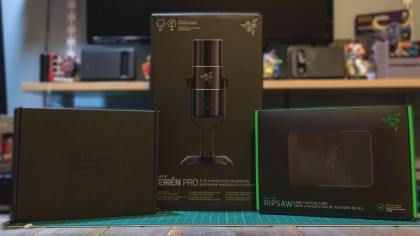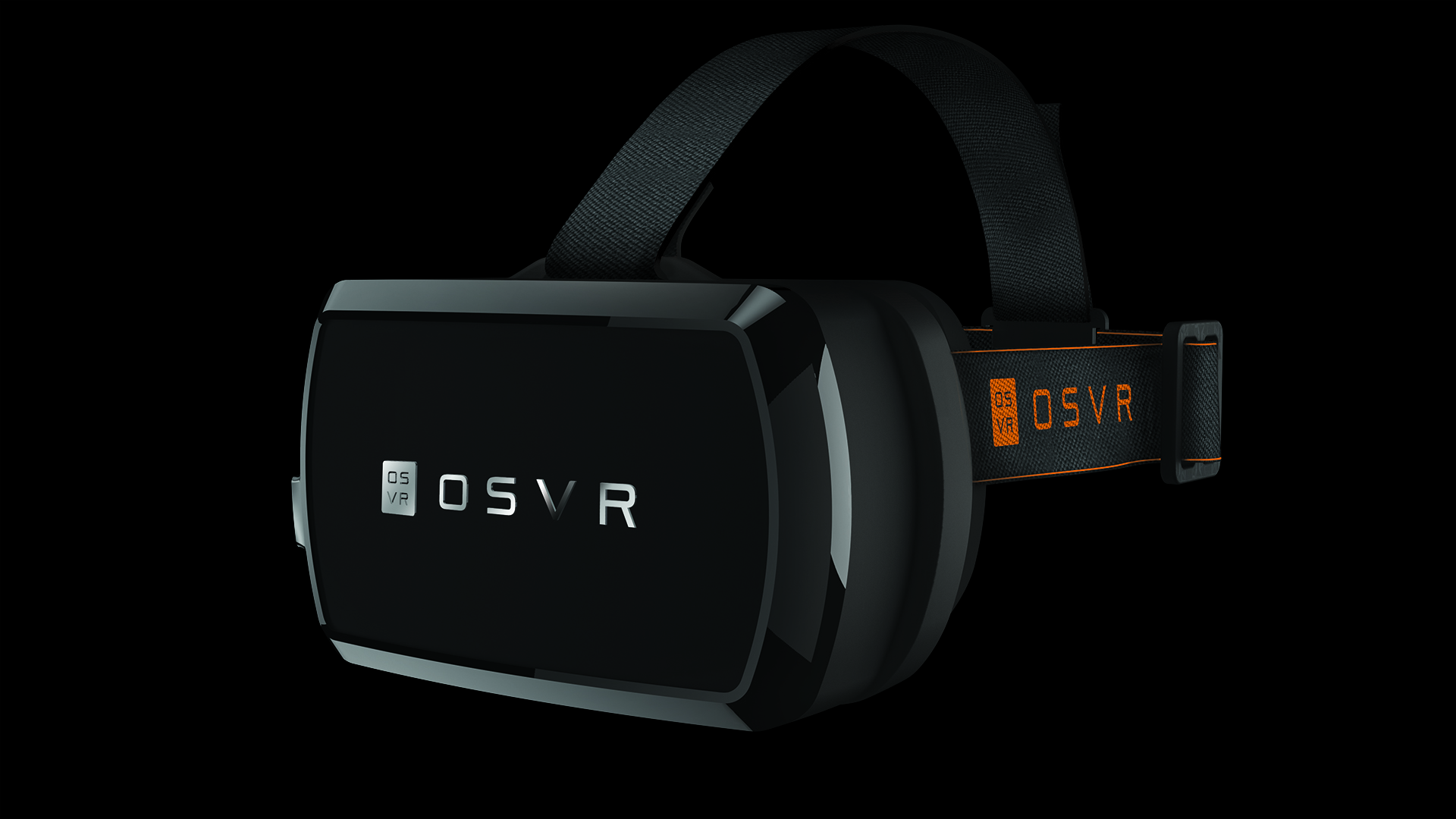'Razer's Switchblade UI was ahead of its time, and we want to evolve it'
Its next laptop could go back to the future

Razer has had a busy year. After getting off to a pretty much perfect start by winning the 'Best in CES' award for the sixth time in a row, the California, US-based gaming hardware company wasted no time in unveiling the Razer Blade Stealth. Arguably the company's best designed (and sleekest) gaming laptop to date, the innovative machine connects to an external GPU enclosure called the Razer Core for an instant graphics boost.
The company hasn't stood still in the peripherals space either, unveiling its stripped down BlackWidow X range of mechanical keyboards, and a new Razer Naga Hex V2 gaming mouse for MMO players, alongside a suite of peripherals designed to help gamers stream game footage that includes the Stargazer depth-sensing webcam and Ripsaw capture card. To find out more about what's on the horizon for the company's peripherals, TechRadar spoke to Ruben Mookerjee, GM and VP of User Interfaces at Razer.
TechRadar: Razer stripped away some of the excess that from its BlackWidow keyboard to create the BlackWidow X Chroma. What was the goal there?
Ruben Mookerjee: We wanted to take the Razer Green and Orange keyswitches that we're very proud of, and remove the military-grade metal around them to expose the keys. We tidied it up and took some of the unsightly holes and fabrication marks out of it to essentially leave the core of a BlackWidow minus the plastic shrouding. We took out the macro keys, USB and audio pass-through to give it a cleaner and more compact basic keyboard that some of our users were asking for.
TR: The BlackWidow X Chroma models feature Razer's Green and Orange mechanical switches, which came in for some criticism for their quality by certain users online. What was your response to that?
RM: I'm probably speaking for you and I when I say that gamers are a skeptical bunch, so our first reaction is normally to be a bit cynical. There's a lot of stuff on the internet about us supposedly cutting costs, but to be honest the truth is that it's the other way around. It's ended up costing us a lot more than it would have been to stick to a mass-produced switch.

But we went the extra mile because we felt we could make a better keyboard, and the sales tend to support that. We're not the only company that's done our own keyswitch but I think that we tended to take everything we liked about Cherry switches in the first place and tightened them up to make them into a better gaming switch rather than redesign them.
Sign up for breaking news, reviews, opinion, top tech deals, and more.
TR: Where do you see the innovation coming from next in keyboards?
RM: I think there are some revolutionary new technologies on keyswitches which we've been looking at and we have some patented designs that we hope to bring to the market fairly soon. We've been looking at this for quite a long time – keyswitches that offer more customization and physical customization – so not just lighting.
Wouldn't it be great to pull switches out and push them in and have a mix of switches depending on how you prefer to type? Maybe you want your tabs and caps and shift and spacebar to use a different switch to your A to Z characters. They're things we've been investigating for quite a while and we're hoping that we can show more innovation in that area.

TR: Many companies are now putting RGB lighting onto their peripherals, but Razer always seems to go the extra mile by providing developers with the Chroma SDK to play with…
RM: That was always the goal. We're not the only company to put RGB lights in products, but from the day we envisioned it the plan was always to get this API into the hands of developers which has been the case now for nearly a year.
We're seeing some nice implementations - like Rise of the Tomb Raider and Overwatch lighting profiles for our Chroma BlackWidow keyboards. We worked closely with Blizzard on Overwatch for that - their office is quite near our sales office and we hang around with them quite a bit.
TR: Razer's refreshed Blade laptop has a Chroma RGB keyboard now too. Are you tempted to bring back the Switchback UI that appeared on older models?
RM: It's an old cliché but the Switchblade UI was a bit ahead of its time. The biggest challenge was getting developer support for it. The technology of the time was very expensive, back when we put it on the DeathStalker Ultimate. It's still available on the 17-inch Blade, but it's quite an expensive piece.

We're always looking at ways we can evolve that as we have a lot of native support for it in the future. We're particularly proud of our implementation because there are other switches out there that have OLED displays behind them, but usually they mount the OLEDs so far below the switch that you only see what they're displaying if you're looking directly on top of it.
TR: Would a new Blade laptop with featuring a Switchblade UI be more affordable for consumers to buy these days?
RM: Well, like a lot of things these days it comes down to volume. But it's inherently quite an expensive tech if it's done well.
TR: Razer's Turret lapboard was finally released this year after several delays. How come it took so long to come out?
RM: The Turret was originally developed along with ForgeTV, the Android gaming system that we announced in January 2015 at CES that lets you use your Razer Blade gaming laptop and Android ForgeTV in the living room.

We thought the Turret was a successful design, but for a variety of technical reasons it took us a long time to get ForgeTV to market, and a lot of what we were trying to achieve with that has been done with SteamLink.
Valve brought out the Steam controller which I think is a very ambitious and clever attempt at trying mouse and keyboard control on a game pad. It was really in December last year that we realized there was a lot of demand for the Turret keyboard what with Steam boxes and Steam Link. It was only a year and a half late!
TR: Razer launched the Ripsaw game capture card. What barriers to game streaming does it remove for gamers?
RM: We identified the fact that broadcasting was quite an interesting, almost meta market for gamers. Gaming has become a spectator sport as well as a participation sport, and part of that is down to the rise of personalities and commentators who are doing their own video commentary and live broadcasts on Twitch. We realized there are a lot of people who have something to say but don't know how to get themselves out there.

With the Ripsaw we're trying to demystify and then simplify the process of taking a video feed from a gaming platform whether PC or console and then broadcast it. We're supporting Xsplit and OBS because they're the two most popular platforms people are using. Right now there are more than 30,000 streamers raising support either directly or indirectly through products we've given away.
TR: The card lets gamers capture footage at up to 1080p and 60ps. Why doesn't it go up to 4K?
RM: That would make it a much more expensive and complex product. It would end up essentially becoming a video card. There's not many people who stream at 1080p – most people capture at 1080p and stream at 720p – and I don't see that changing in the near future. That's limited by bandwidth, not resolution. It's more important to have sharp optical quality, reducing artifacts and lag to eliminate tearing.
TR: VR is clearly going to be huge for PC gamers. As a company that produces peripherals, does it bother you that VR may eventually take gamers away from the keyboard and mouse as the price of headsets and alternative controllers become available?
RM: As a gamer, I hope that VR brings new IP. VR is going to bring additional games – it's not going to be just Tomb Raider 3D, for example, all of the time. We're going to get something as ground-breaking as Doom was in 1994 when I first played it. Suddenly a new technology can make you realize what the possibility of being in a virtual space.
But I don't think people are going to stop playing MOBAs or RTS or Counter Strike. People are still going to play those games, probably as much as they do today, once VR reaches more people. But these will be additional games, and I don't think that people will stop using consoles.
I strongly suspect that PlayStation VR is going to be one of the first ways people get into virtual reality. And I think that once people get a taste for VR and understand it, then they will discover that the PC has much better graphics capabilities and better games. But it's going to cost more as you need a high quality video card and a high quality head-mounted display to do it.
TR: Razer is part of the Open-Source Virtual Reality (OSVR) ecosystem. Why has it gone down that route rather than pushing its own proprietary VR headset?
RM: The thing that worries us and a lot of people is if VR turns into a closed standard - like one particular headset - or several headsets that only work with certain games. It would fracture the market so much that people would not bother getting involved, and that's what we want to avoid.

The whole point of OSVR is not the head-mounted display, which is the hacker development kit, but it's the open API that's underneath. So what we're saying is that if you write a game today around OSVR, we can guarantee that all OSVR peripherals in the future – whether that's five or twenty years' time – will comply with that API, so the games won't go out of date.
We want to make that assurance to independent developers – not just the big studios – who are involved in developing VR content for the PC. We already have big partners like AMD, Nvidia and Intel who are part of the OSVR initiative. Increasingly we're finding that peripherals companies are getting involved too.
TR: What traction has OSVR picked up to date?
RM: For the first year there was a fair amount of suspicion that Razer simply wanted to get ahead with VR. However, we spoke to other companies who are committed to gaming and we all admitted that there is too much to lose to squabble about VR. We don't want to turn it into a Betamax vs VHS type argument.
We need some standards otherwise consumers, and all of us will lose out. People will lose interest in VR tech which we don't want, so that was really the goal. Having said that, I hope to get some Razer-branded VR peripherals that will work with OSVR and other platforms out by the end of the year.
